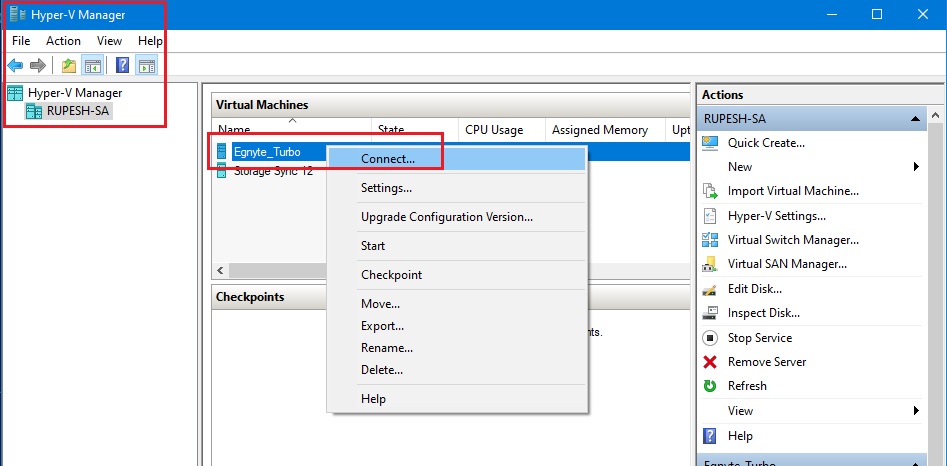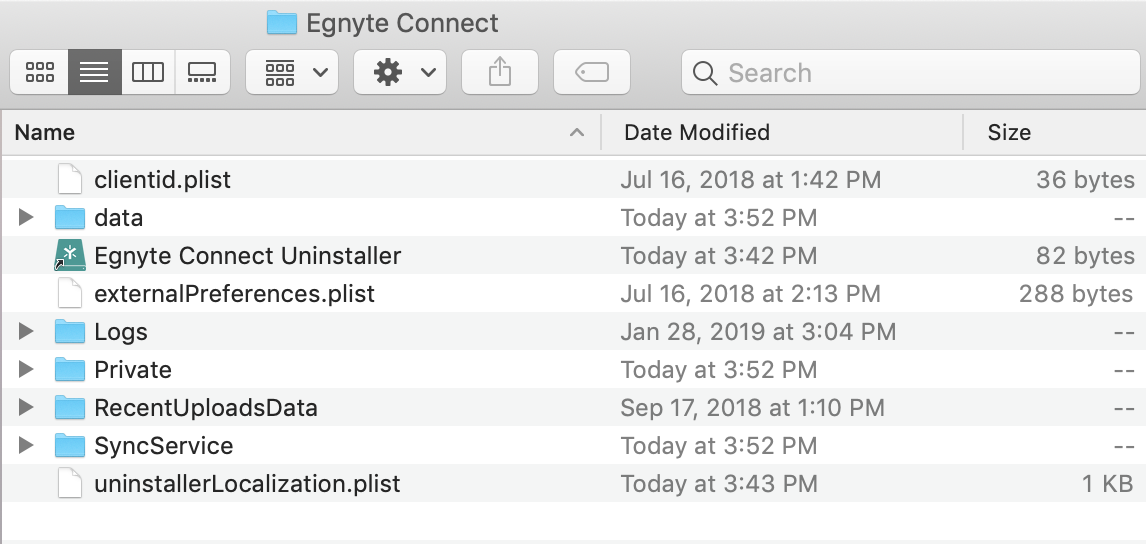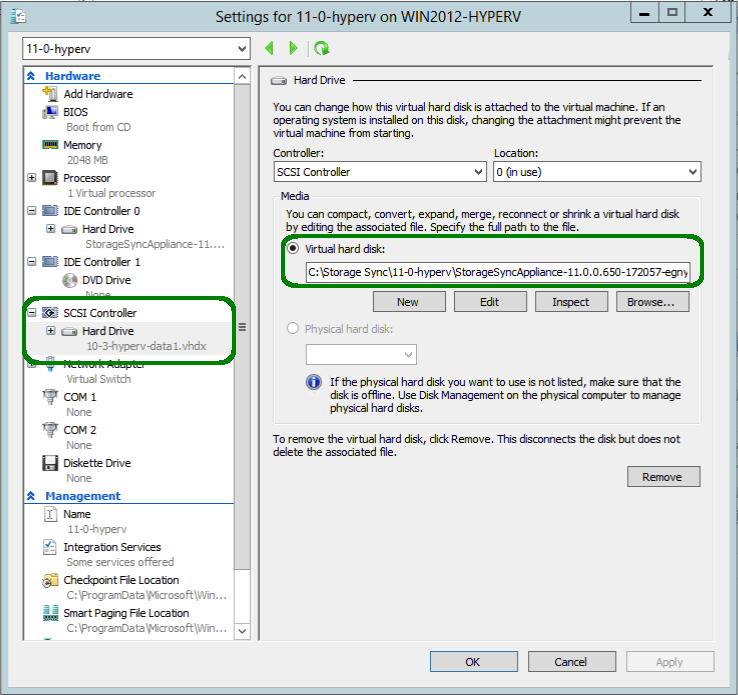

- #Egnyte desktop sync for hyperv license
- #Egnyte desktop sync for hyperv Offline
- #Egnyte desktop sync for hyperv windows 7
In other words, before redirection an application would:
#Egnyte desktop sync for hyperv license
However, we then started to get complaints that applications were no longer functioning, were requesting licenses, etc… Moving upĪfter investigation, we found that the applications in question are using an “unusual” way to determine the path to their settings and license folders: they look up the location of the Documents folder from the User Shell Folders registry key and then navigate UP one level. We continued to use Folder Redirection, just without the initial copy, and we found that our logon times had improved. The relevant configuration looks like this: These two scripts are executed through AppSense Environment Manager. `nThis may require an automatic restart", "AppSense EM Enablement", 0 ) :: LoadWithPartialName ( "" ) | Out-Null ::Show ( "Please Note: This logon may take longer as the Follow Me Desktop is being configured.

Keeping people in the dark is a sure way to generate tickets:
#Egnyte desktop sync for hyperv Offline
Replacing the Folder Redirection mechanism of moving files to the Offline Files cache with a simple scripted file move resulted in an incredibly quick move.Īt the same time, we utilize a secondary Powershell script to alert the user that we are moving their data – communication is key.
#Egnyte desktop sync for hyperv windows 7
Windows 7 Offline Files, on the other hand, has a whole lot of cataloguing to do when files are added to its cache. As this happens on the same disk the files stay where they are, only the MFT entries are updated. But the key difference here is that we are moving the data to its new location. Now I know people may say: “but that’s single-threaded”. // Searches one label for the first time someone sent you an email // Returns name, e-mail address (extracted from the "From" field) and message time // function GetAddresses ( ) You can also view it directly in the sheet by navigating to Tools > Script editor. You do not need this in order to use the email extraction script, but for the those interested here is the source code. Its output, the extracted email addresses, are written to a new sheet:Īs you can see above, it not only lists the email addresses, but also the person’s name and the time of first communication. then click Extract email addresses in the HK Scripts menu: In this example I am using the label Spam. Fill in the label from which you want to extract email addresses. Next, your copy of the spreadsheet opens in Google Sheets. You will be asked if you want to make the copy: Side note: this nifty copy feature is triggered by appending /copy to the document’s URL.

To use the script copy the sheet to your Google Drive by clicking this link. The email extraction script is part of a Google Sheet to provide an easy user interface for data input and output. In addition to the sender’s email address it lists the sender’s name and the date of first communication.

It processes even large numbers of emails quickly. The script extracts email addresses from all messages in all threads tagged with a given label. However, that turned out to be slow and did not even work reliably. When I needed this functionality recently I quickly stumbled upon a solution on. If there only was a function to extract a list of all email addresses from all the emails tagged with the label friends. If you are throwing a big party you might want to send invitation emails to all of them. Let’s say you tag all personal communications with your friends and family with the label friends. The simple fact that you can tag a message with more than one label makes it far superior to message filing systems based on folders. GMail’s most useful feature is the labelling system. List all Email Addresses from a Label’s Messages Let’s see how we can put Google Apps Script to use. When that happens, a scripting interface can be a lifesaver. As with any other product, when working with GMail / Google Apps you sometimes get to a point where you want something the product simply does not provide.


 0 kommentar(er)
0 kommentar(er)
